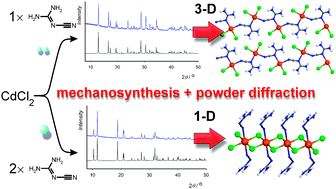Towards an environmentally-friendly laboratory: dimensionality and reactivity in the mechanosynthesis of metal–organic compounds†
Abstract
We present a proof-of-principle study of an environmentally-friendly approach to laboratory research, in which the synthesis and structural characterisation of metal–organic complexes and frameworks are achieved without using bulk


 Please wait while we load your content...
Please wait while we load your content...